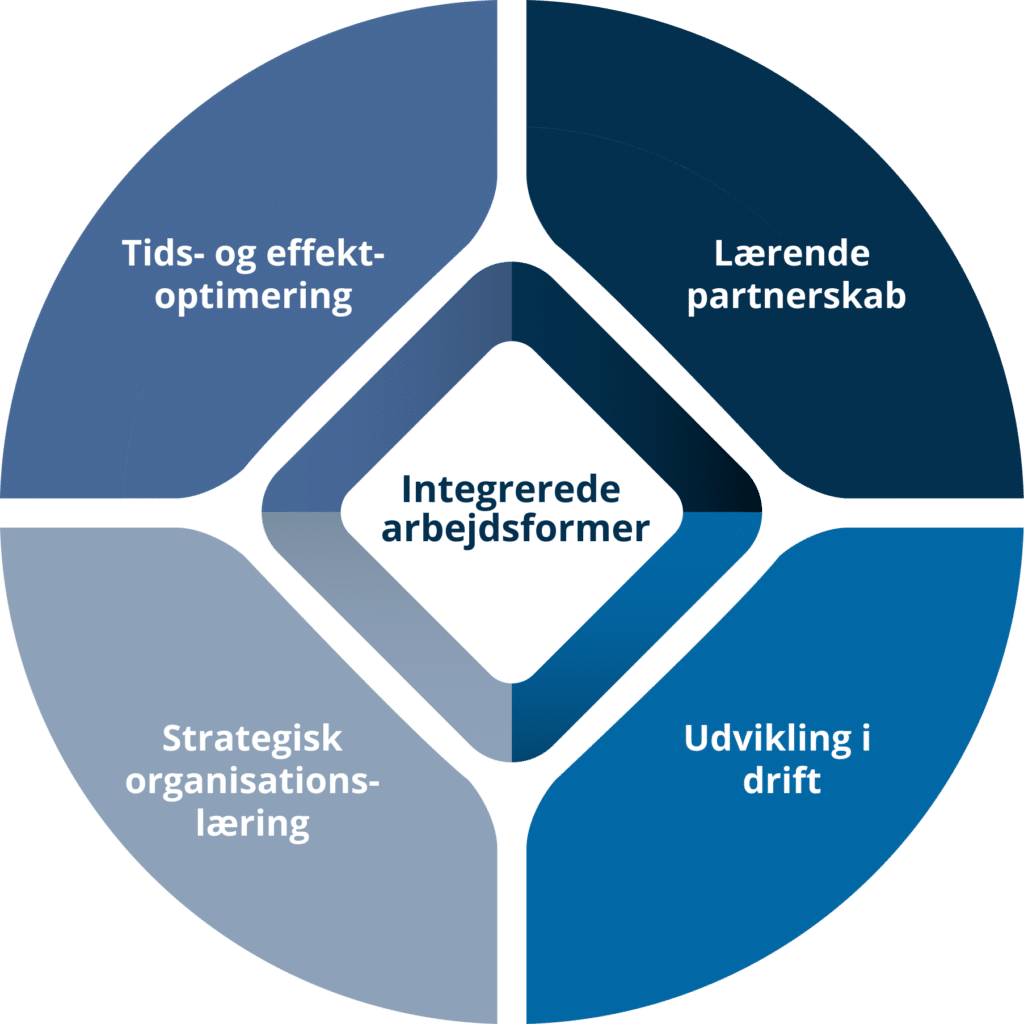How to lead your organization through change
Are you leading and facilitating a change process in your organization? Then it's all about getting off to a good start by involving your employees and making sure they feel seen and welcomed in the change process so that they embrace the new initiatives. In this article, we'll look at a number of methods you can use to implement a good change process.
What is a change process?
When something takes on a different shape, character or property, it undergoes a change. We are constantly changing as humans, and so is the world around us. Therefore, it's inevitable that organizations need to change and adapt in order to survive - and to evolve and improve.
It doesn't have to be a massive change before you need to decide how to approach the change process. A change in an organization can be anything from a change in the coffee machine to a radical change in employee work processes, a merger or an acquisition.
As a manager, process consultant or development consultant in an organization, it's essential to know how to create the best framework for successful change processes. It's about being at the forefront of the change process so you can involve your employees.
What is important in a change process?
The most important thing in a change process is the way the change is communicated and being able to put yourself in the shoes of your employees and understand their reactions to ensure a successful change process. It is essential that you Understand and be able to manage your employees' reactions to the change you are implementing - we'll cover a model for this further down in the article.
It's very normal for an organization's employees to react with resistance to change. There's nothing wrong with this, as it's often a sign that employees are engaged and care about the organization and their work.
However, as a manager, you can plan and create a framework for the change that minimizes employees' negative reception of what's about to happen. People generally need to feel included and involved in decisions and changes, as it becomes unsafe for us if we lose control or feel overlooked. The acceptance of a change needs to come from within and employees need to feel included in the decision-making process around a change. How you as a leader can create a good and successful change process in your organization is discussed below.
Read also about three common pitfalls to be aware of when leading a change process.
Facilitate good change processes in your organization
Once you and the rest of the leadership team in your organization have identified a change you want to implement, there are a number of key considerations and strategies worth considering.
Below, we'll take a brief look at how you as a manager can communicate a change to your employees, how you can present the change in a positive way, and how you can implement a successful change process with 5 factors.
There are many methods and approaches to managing change, and the following are just some of the many that you can use in your work as a leader or facilitator of a change process.
Want to be even better equipped to manage processes?
LEAD's research-based process consultant training gives you the methods to design, facilitate and lead strategic development processes and changes to create the impact you need.
This is an education for those who work with development, processes and change management.
Read more about the process consultant training here
How do you communicate the new change to your employees?
Consider how the change you as a leader want to implement is presented and communicated to your employees. This affects their perception of the change and how they receive it. There are several ways to handle the presentation of a change to your employees, but below we briefly review two models that can be used to achieve positive results.
Use the SCARF model when leading change processes
According to the SCARF model, the reaction you get when presenting a change depends on SCARF model depends on whether it positively or negatively impacts employees' perceptions of five social needs. The five social needs are:
- Status
- Safety and security
- Autonomy
- Cohesion
- Justice.
Do your employees find that a change reduces their sense of status, security, autonomy, cohesion and fairness, research suggests that they will fundamentally resist the change.
This is because the change is perceived as a threat that activates the fear center of the brain. This will naturally lead your employees to view the change as negative and they will not engage with the change.
Conversely, do your employees feel that the change promotes their sense of status, security, autonomy, belonging and fairness, they will be supportive of the change. This is because the change is perceived as a gratification that activates the brain's reward center. In this case, your employees will see the change as a good thing and will be happy to engage with the change.
The IKEA effect
When managers simply present employees with ready-made solutions, they miss an opportunity to create ownership, engagement and pride. Let employees create the solutions themselves, but make sure you agree on the goal, writes Christian Nyvang Qvick, Chief Consultant at LEAD, in this article on what IKEA furniture can teach you about change management.
The IKEA effect is a cognitive bias used to describe the tendency of people to place greater value on something when they have helped create it. It is substantiated in a studywhere researchers looked at two groups of participants.
The first group, the builders, were asked to assemble an IKEA piece of furniture. The second group, the non-builders, were given the same pre-assembled IKEA furniture for inspection. Then both groups had to give an estimate of how much they would pay for the furniture. And here's the interesting part: the builders would pay 63% more than the non-builders for the same piece of furniture.
The IKEA effect applies not only when people produce physical things, but also when we, for example, need to develop solutions in the form of concrete actions that can support a desired change. Therefore, supporting your employees in developing the solutions themselves can be extremely rewarding for employee acceptance and thus the success rate of a change, as it will increase their ownership of the change.
So even though the time for a change process can be tight, it can be a good idea to hold back on presenting your own ready-made solutions. Even if you as a manager may already know what actions need to be taken to support the desired change.
5 factors that help you implement successful change processes
At LEAD, we have developed a model that consists of five factors that are crucial to successfully implementing change in an organization, whether your title is leader, development consultant or change agent. For simplicity's sake, we have chosen to call the model the five-factor model, and it has been developed based on input from 100 practice experts, along with research on successful implementation, change management, process consulting and organizational learning.
The five-factor model sets the framework for a new practice- and research-based direction for consulting work within organizational development and change. The model integrates soft and hard development methods with a focus on creating concrete results, achieving strategic goals and strengthening the organization's structure, competencies and culture.
You can read about the five factors in the model and how to use them in development and change processes in our article Get a description of five-factor consulting.


Do you want to get better at:
- Clarify the organization's real issues
- Create a design that matches the unique problem
- Read a room and facilitate effectively
- Communicate the right messages that create engagement and followership
- Be more confident in your role as a process manager
- Integrate top-down and bottom-up processes
- Design and implement engaging and varied ways of working
- Increase speed by using behavioral design
- Develop and implement in an agile way - adapting as the situation changes.
Fill out the form below and receive our description of the research-based process consultant training that gives you the most powerful tools for process management in practice.



